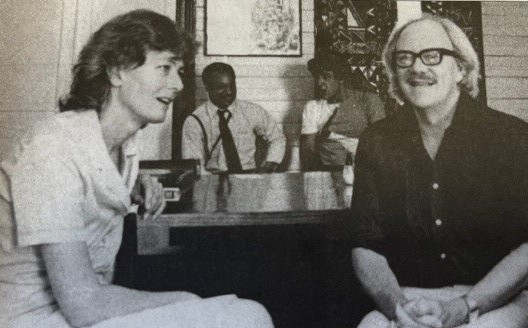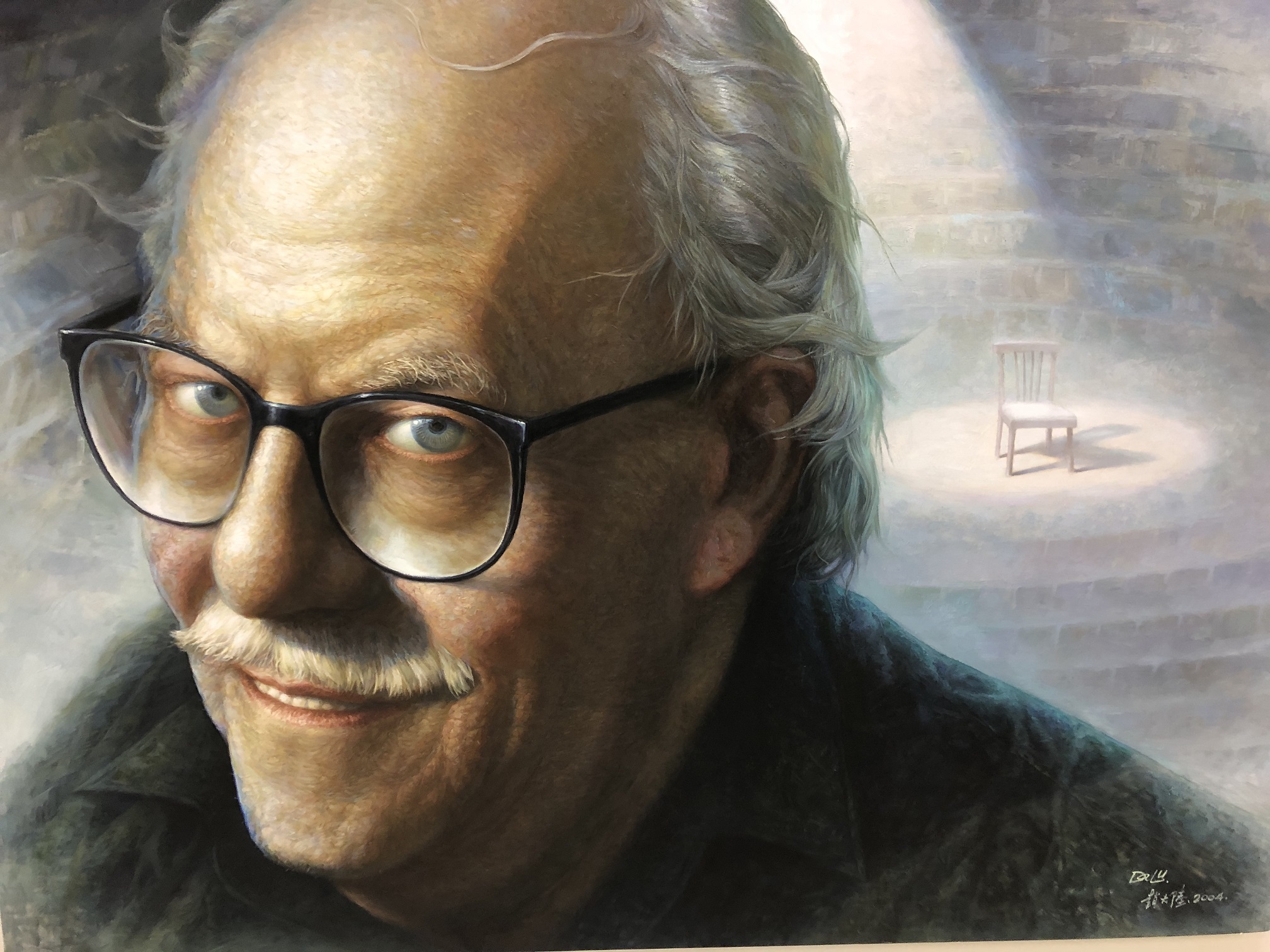BA Hons 1954, MA 1956, honoris causa 2003
John Clark AM, Director of Australia’s National Institute for Dramatic Art (NIDA) for four decades, has an eye for talent. An eye too for story and for teaching.
A firm believer in practicing what you preach, John produced 59 plays – from Death of a Salesman to Hamlet. But it was teaching the next generation of actors, writers, producers and technicians that he sees as his life work.
Among the actors to graduate in his time as Director of NIDA were Cate Blanchett, Hugo Weaving and Mel Gibson. However, John is quick to add that he is proud of all NIDA alumni.

“The profession rewards some people – they are lucky getting a break, or happen to look wonderful on film, or some other circumstance – and their career takes off and they find international stardom, but there are so many NIDA graduates who never get a lucky break,” John said.
“These include many very talented actors who keep playing minor roles but whose contribution to the profession has been truly remarkable.”
As well as his work at NIDA, first as a lecturer, then as Director from 1969, John was integrally involved in the establishment of the Sydney Theatre Company. While at NIDA, he led the charge for exchange programs, which saw Australian directors travel to India, China and Singapore, enriching Australian theatre on their return.
We are part of Asia and I thought it was terribly important that we established links there ... to see theatre in Shanghai, Bejing, New Delhi and Bali is an extraordinary experience."
Central to John’s vision always, was, as he describes it, “to create something uniquely Australian”. After retiring from NIDA, he received invitations to teach throughout Asia.
At the University of Tasmania, he majored in English language, literature, and ancient civilisations. The University of Tasmania was located at Hobart’s Domain then and had just 500 students. He says it was the University’s sense of “a community of scholars” that inspired him in his vision for NIDA.
We asked John about his career and thoughts on acting, teaching and storytelling:
You have had a long and varied career – as Director of NIDA, at the Sydney Theatre Company, teaching throughout Asia and producing tens of plays. What have been some of your career highlights?
I suppose contributing to the Australian Entertainment Industry. I was always keen about theatre at school and university. It was when I saw (the Australian play) Summer of the Seventeenth Doll in London that I thought it was quite possible to have genuinely Australian theatre instead of importing material from America and Britain.
Then NIDA offered me a job and I learnt from very good people – I learned skills as a professional director, learning by doing, rather than by sitting in a library. When the opportunity to be Director of NIDA came up, I was able to do some of the things I was wanting to do: to develop an Australian style of acting, to encourage new Australian writing, and to do whatever else I could to support the Australian industry, whether in theatre, film or television.
I am proud of running the Jane Street Seasons of new plays which generated productions like The Legend of King O’Malley and Don’s Party, which created a whole new audience for Australian theatre. Theatre is not good unless you have an audience – people often forget this. Both those plays were very original productions that grew out of NIDA and went on tour around Australia for a year.
I am also very proud of establishing the Sydney Theatre Company with my NIDA colleague Elizabeth Butcher, way back in 1979.
What makes a good actor?
At NIDA, we put a lot of money and effort into the audition process of selecting students. The very best applicants would spend two days with us. If they survived the first morning, they came back in the afternoon. If they survived the afternoon, they were invited to come back the next morning, and if they survived that, they came back again for the final afternoon. That meant we spent two full days together and got to know each other pretty well. We could tell how they responded to teaching and see what their strengths and weaknesses were. We could see if they had that spark of imagination an actor requires. We would ask applicants to tell a story and if we felt excited by the way they told the story, and could feel that they loved it and were really invested in what they were saying, and could do it again with a different story and a different character, then we knew we had a good actor.
Then, when they started with us, we set them on a journey. They could see what was ahead of them in first, second and third year. Because we were so careful with the selection process, very few people failed.
What makes a good story?
We used to ask the best applicants to perform one of Shakespeare’s great speeches. We encouraged them to look for the journey that that speech takes the actor on: how the character changes from the beginning of the speech to the end of the speech. Critical to good acting is an awareness of a beginning, middle and end in the story you are telling.
NIDA students embark on this journey, too. Over a period of three years, they grow as human beings. The elements of change, of development, of moving from point A to point Z, are as important in education as they are in playwriting.
If you go to see a play and the characters don’t change, then it becomes boring. Most films, like plays, also have to have a beginning, middle and end. They take the audience on a journey. They come out thinking, “Gosh, I didn’t realise that could happen.”
What did you enjoy most about your time at the University of Tasmania.
At university, I acquired a life-long love of theatre, dramatic literature, art and philosophy. I enjoyed every aspect of University – the company of the people I worked with and played sport with and some inspiring teachers.
It was a small university in those days. There were only 500 students. You were encouraged to join in the life of the University, I played football and table tennis. I took part in student politics and Old Nick revues. The University was a community of teachers and students all going after the same thing. NIDA was a community of actors, designers, directors, technicians and craftspeople all seeking to improve their skills in order to enhance the Australian arts/entertainment industry.

First published in Alumni and Friends eNews.
If you are a member of the University of Tasmania community and would like to receive this publication, please provide or update your email address.
Top of page: John Clark directing in India. His book An Eye for Talent – a life at NIDA was released in 2022 and is published by Currency Press.


